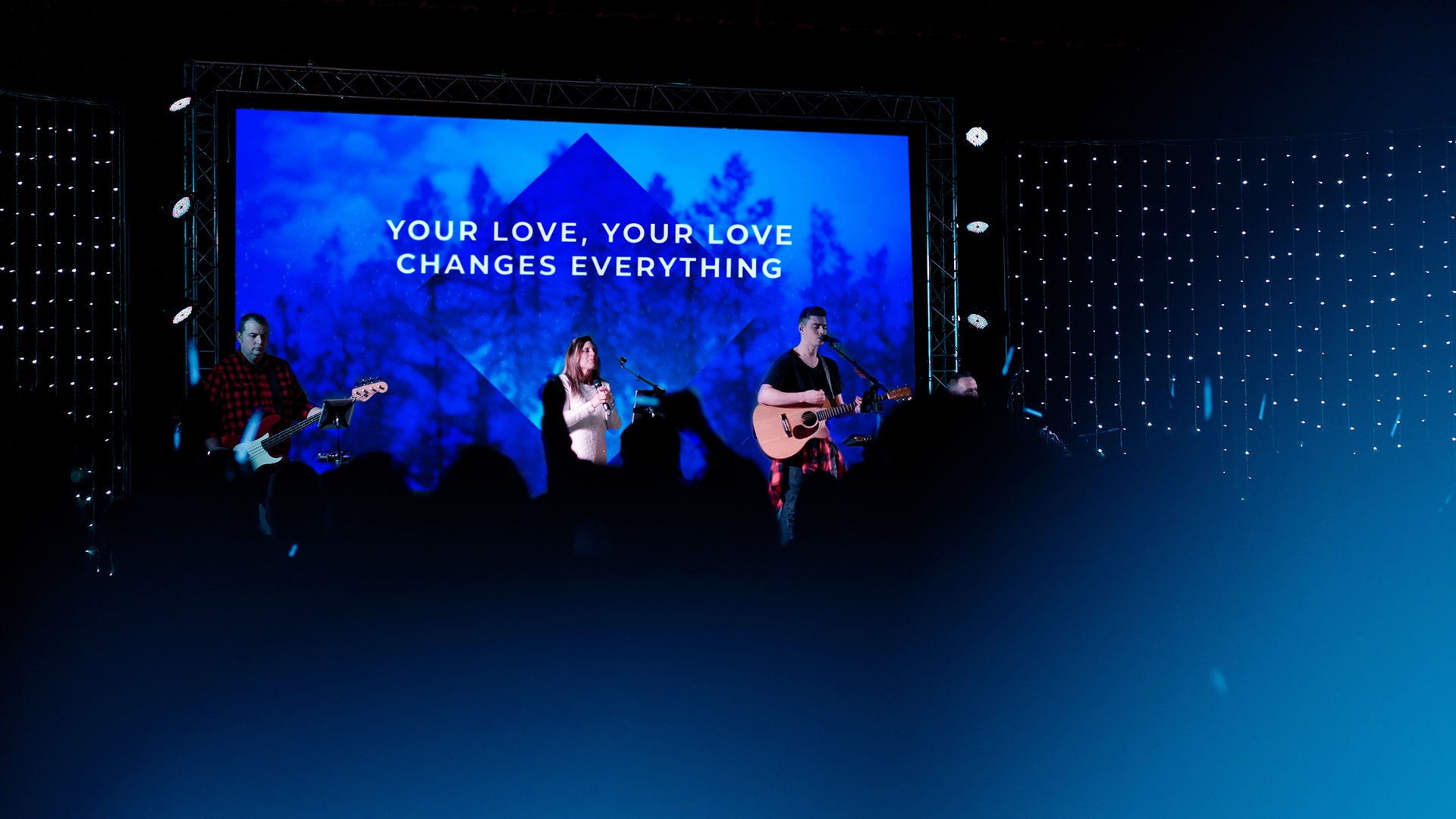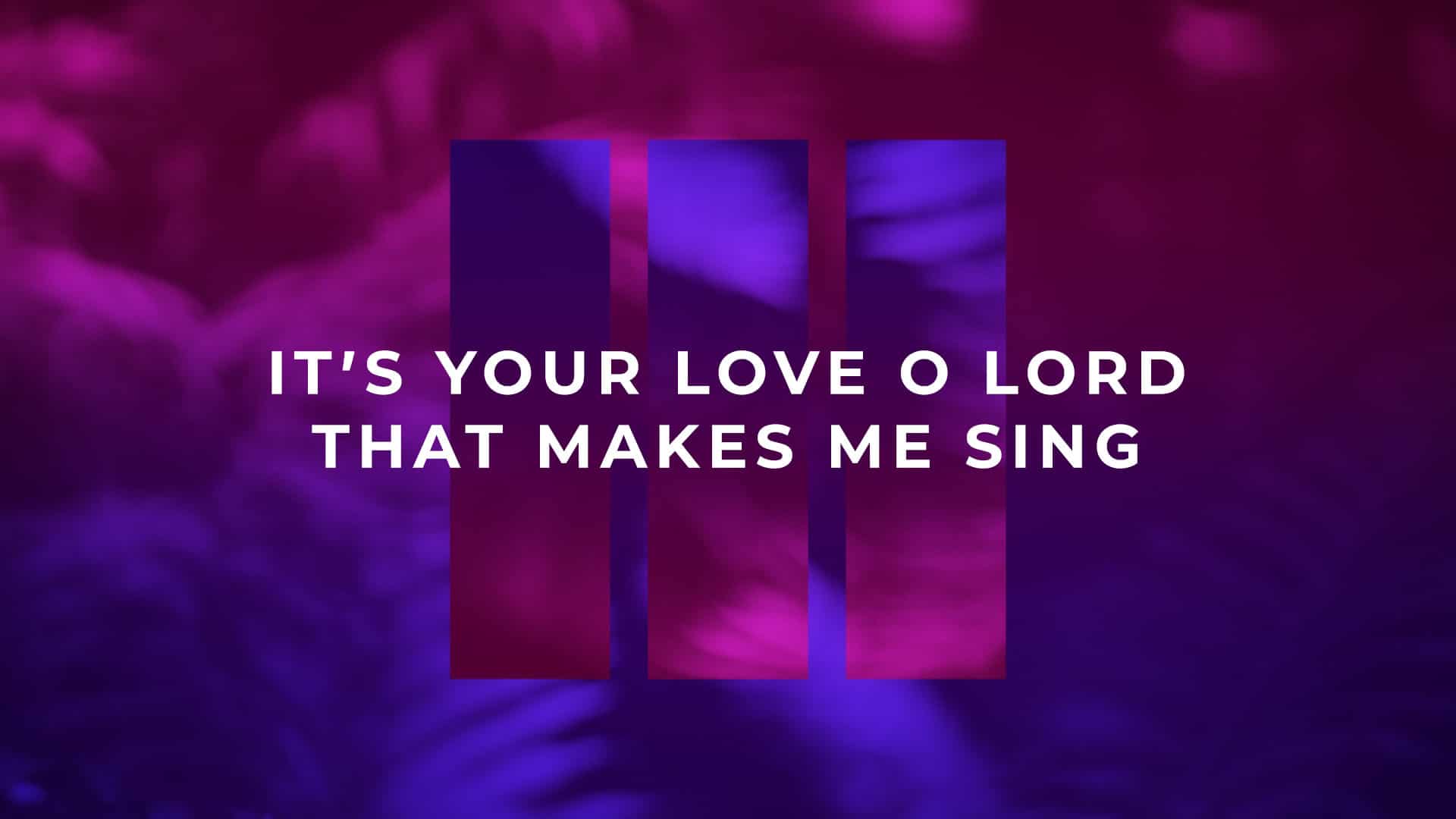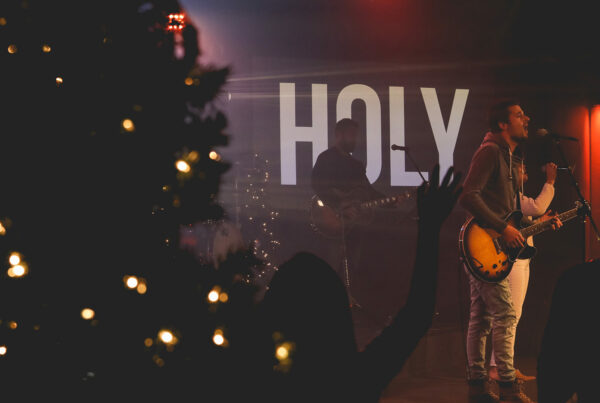
Projecting lyrics may not be the most exciting part of church production, but there’s no doubt that it provides a valuable service for your audience members. It’s particularly important for newcomers who are less likely to know the songs your worship team is singing. Because of this, it’s critical that we do our best to create slides that are easy to follow and look great, too.
Whether you’re new to church production or a seasoned pro, here are 10 important rules to keep in mind when projecting lyrics for your faith community:
1. Provide lyrics when you want people to sing along.
Wondering whether or not to display the words to worship songs, choir specials, or solo performances? A general rule of thumb is to provide lyrics to any song that you want your audience to sing along to. Some music in services may not require lyric slides, but most do.
 Background From The September 2018 CMG Pack (Font: CMG Sans)
Background From The September 2018 CMG Pack (Font: CMG Sans)
2. Provide the words to each part of the song.
For your congregation to be able to sing along properly, be sure to include every part of the lyrics that will be sung from the stage in your slides. It can be helpful for the operator to place these slides in order as they’ll be used.
3. Choose a font that is easy to read.
Sans serif fonts are by far the easiest typefaces to read for worship projection. They look clean and neat on your slides, plus they are what many people are used to seeing on screens. We have created our own font, CMG Sans, that is specially designed to look great in church environments. It’s available to download and use in your church for free.
CMG Sans – The World’s Best Lyric Font

Background From The September 2018 CMG Pack (Font: CMG Sans)
4. Make your font size large enough for everyone.
While you don’t want your slides completely consumed by text, it is important to have your words be visible. A good rule of thumb is to have your text be clearly legible from every seat in the room. Don’t be afraid to use less lyrics per slide if necessary for larger text.
5. Use dark backgrounds behind your text.
Since white text is the standard look for projected lyrics, using dark backgrounds is best for visibility. Even with a shadow behind your words, it’s recommended to avoid light-colored backgrounds altogether. Deep colored backgrounds also look great on projectors and help the white text to stand out.

Background From The September 2018 CMG Pack (Font: CMG Sans)
6. Use 1-2 backgrounds for each song.
While some churches choose to use one background for the entire duration of a service, using different imagery for each song can complement the change in music. Using one background per song is today’s standard, however, another option is to change to a second background in the big moments of a musical piece.
7. Use backgrounds that match the song tempo.
Just as important as choosing a worship background for your lyric slides that looks good is choosing one that matches the speed of the song. For example, you wouldn’t want a slow, reflective song to be interrupted by fast, exciting movements in a background. Match the tempo of the song as closely as you can.
 Background From The September 2018 CMG Pack (Font: CMG Sans)
Background From The September 2018 CMG Pack (Font: CMG Sans)
8. Break lyrics up into bite-size pieces.
It can be tempting to squeeze a lot of lyrics onto a slide to make it easier for the operator to keep up. Unfortunately, large sets of text make it difficult for your audience to jump in and can ultimately cause more damage than good. Stick to 1-2 lines of text per slide and think of 4 lines as your max.
9. Display each lyric slide just before it’s sung.
Lyrics should be displayed just before they’re sung so that audience members have enough time to comprehend the next line. It can be helpful to transition to your next slide while your congregation is singing the last word of the current slide. This small change in timing makes a huge difference in crowd participation.
 Background From The September 2018 CMG Pack (Font: CMG Sans)
Background From The September 2018 CMG Pack (Font: CMG Sans)
10. Follow the worship leader as needed.
It’s important to be flexible when displaying your song lyrics. Worship leaders should have the freedom to move around in the song or repeat certain parts differently than the original version. Do everything you can to plan ahead for your worship time, but be prepared to make changes on the fly as needed.





